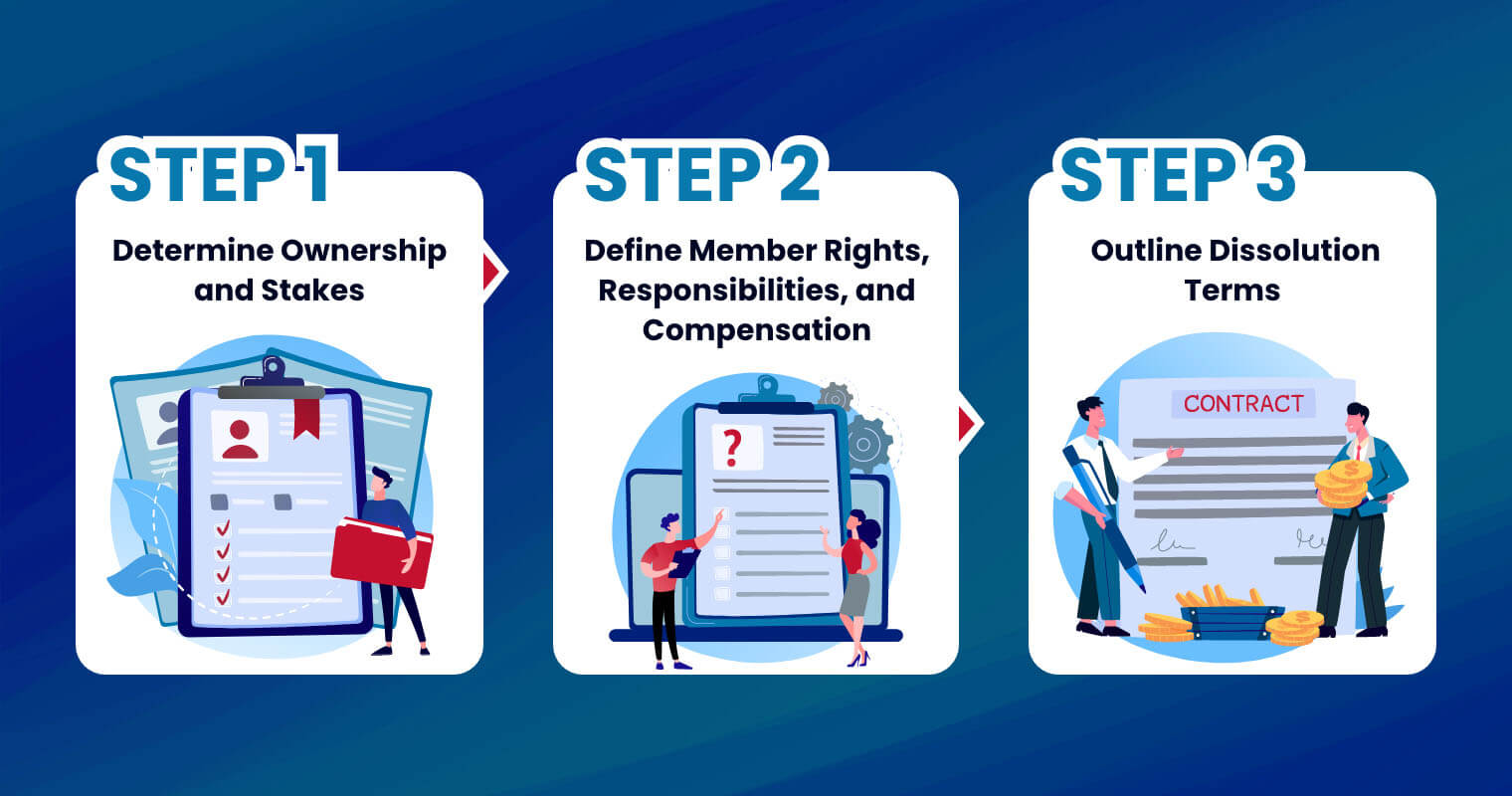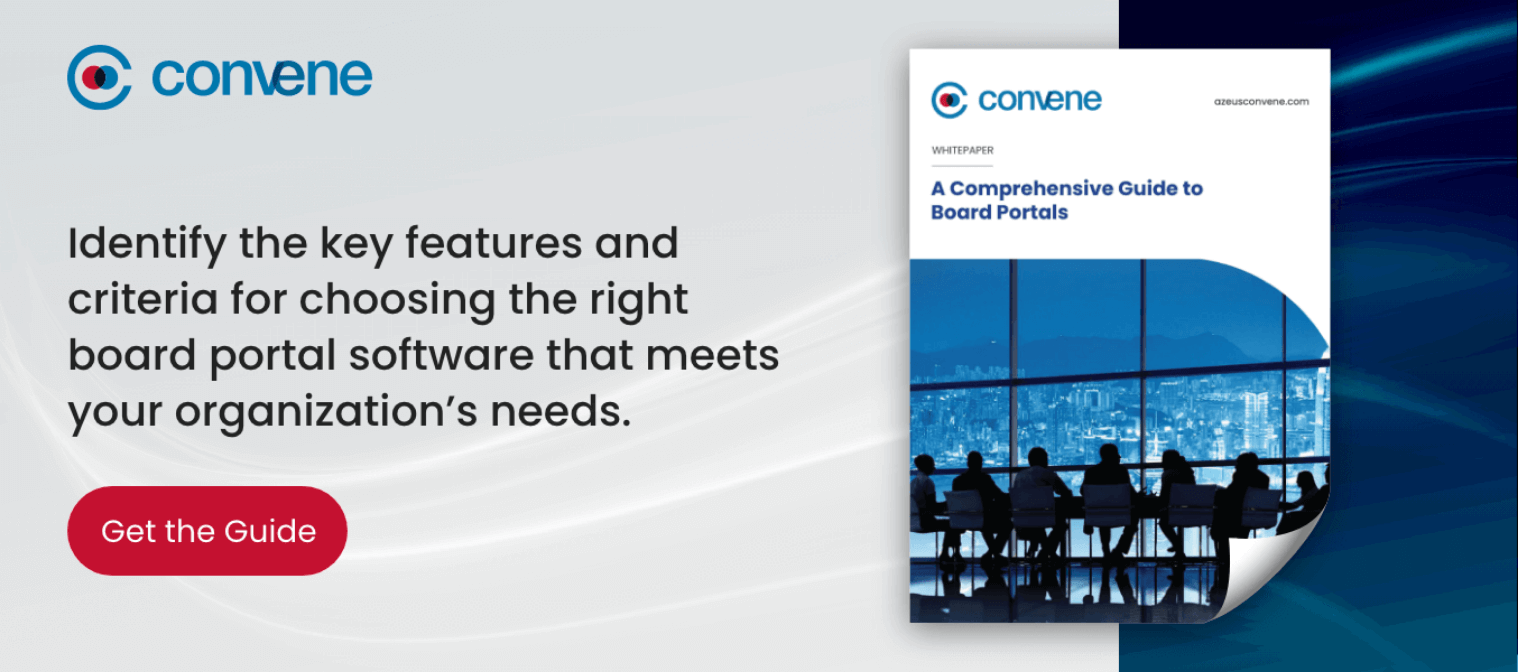Whether you’re a seasoned business owner or part of the board of directors, a clear and thorough understanding of how to make an operating agreement is crucial. Without this knowledge, your business could face misunderstandings and legal problems down the line. To steer clear of such issues, we’ve put together a comprehensive guide that breaks down the essential components of this fundamental document.
In this article, we’ll delve into:
- Operating agreement definition and why it’s essential
- Types of operating agreements
- Step-by-step process on how to create an operating agreement for your business
After reading, you should be able to confidently navigate and create an operating agreement that aligns with your business’s unique requirements.
What is an operating agreement?

An operating agreement is a legal document that outlines the internal structure, management, and decision-making processes of a limited liability company or LLC. Essentially, it is a contract that guides the members and directors when establishing company-specific rules and regulations governing daily operations.
While not all states mandate an operating agreement, having one in place is highly recommended because it will act as a legal shield, protecting LLC directors and owners from the company’s liabilities. This means that with the document in place, the creditors can’t go after their assets upon liquidation. States like California and New York are among those that require an operating agreement.
Beyond legal requirements, an operating agreement is a crucial tool for defining relationships between members, detailing profit distribution, and outlining each member’s rights and responsibilities. By providing a clear business and relationship framework, it helps minimize conflicts within the organization.
How is an operating agreement different from bylaws and articles of incorporation?
Operating agreements and bylaws are both legal documents that govern the internal operations and management structure of business entities. But while operating agreements are specific to LLCs, bylaws are tailored for corporations and partnerships.
Articles of incorporation, on the other hand, are documents filed with the government body to establish the existence of a corporation or LLC. Also known as a Certificate of Incorporation, they contain basic company information and are required by law to start a business.
Why do you need an operating agreement?
Without a written document of how things should be, the company may default to state-specific rules, which might not align with the preferences and intentions of the members. An operating agreement becomes particularly important in such scenarios, as it allows the deciding members and directors to customize the governance structure based on their needs.
In addition to offering a roadmap for how the company will operate, here are other compelling reasons to have one in place:
1. An operating agreement is a legal requirement.
In many jurisdictions like New York, having an operating agreement is a legal requirement for certain business structures. Failing to have one may result in legal complications.
2. An operating agreement clearly defines the roles and responsibilities of each member, their ownership rights, and the management structure.
This includes the members’ financial contributions, decision-making authority, and involvement in day-to-day operations. This clarity is vital for avoiding misunderstandings and disputes among business partners.
3. An operating agreement provides a mechanism for dispute resolution.
In the event of disagreements among members, the operating agreement lays out procedures for mediation, arbitration, or other methods of resolving conflicts without resorting to costly and time-consuming litigation.
4. An operating agreement outlines the transfer of ownership procedures.
If members plan to buy, sell, or transfer their ownership interests, the operating agreement outlines the procedures for such transactions. This helps ensure a smooth transition and protects the interests of both the departing and remaining members.
Are LLCs required to form an operating agreement?
Operating agreements are not mandatory to run an LLC, but as aforementioned, the pros of having one far outweigh the cons – if there are any.
Relying on default state rules may form a generic and inflexible framework that might not suit the business. Taking the initiative to develop an operating agreement allows for the accommodation of specific circumstances and changes within the organization, ensuring that the LLC remains adaptable and enduring.
Types of Operating Agreements
Before learning how to create an operating agreement for an LLC, you must first know what type you’re going for. There are several types of operating agreements every business should know about to be able to select the one that best suits their goals. Each type offers unique advantages, and tailoring the agreement to your business model ultimately enhances its effectiveness. These three are:
Single-Member Operating Agreement
Designed for LLCs with a sole owner, this agreement outlines the single member’s responsibilities, rights, and decision-making authority.
Manager-Managed Operating Agreement
This agreement designates a manager or managers to take over in situations where certain members prefer a hands-off approach to daily operations.
Those designated as managers make the final decisions, while other non-manager members have limited authority and aren’t directly involved in day-to-day operations. While more complex than the other agreements, this type provides a clear hierarchy and structure for easier decision-making.
Member-Managed Operating Agreement
Conversely, in a member-managed agreement, all hands are on deck. This agreement type is the most common among the three and is best suited for small businesses where everyone is involved in the day-to-day decision-making process.
Vesting Operating Agreement
Vesting agreements are often used in startups and other businesses where equity is granted over time. It outlines conditions for ownership based on continued employment or performance milestones.
Buy-Sell Operating Agreement
If a member leaves the company, whether voluntarily or involuntarily, a buy-sell operating agreement specifies how to value their interest. This document also provides a mechanism for the remaining members to purchase that interest, preventing disputes and ensuring a smooth transition of ownership.
What should be included in the operating agreement?
Here is a list of the critical components that will define the structure and governance of your LLC. Ensure these are included when drafting the document:
- Basic Information — Name of the LLC, its principal place of business, names, and addresses of all members, and most importantly, the company purpose.
- Ownership and Management Structure — Read through the types of operating agreements mentioned above and choose which one you will adopt.
- Capital Contributions — Specify the initial contributions made by each member.
- Profit and Loss Allocation — Explain how profits and losses will be distributed among members in this section. This is crucial for financial transparency and accountability.
- Decision-Making Processes — Outline how major decisions will be made within the company. This may include voting procedures, meeting protocols, and the threshold for significant actions.
- Transfer of Membership Interests — Include provisions for the transfer of membership interests, addressing scenarios such as death, withdrawal, or the sale of membership interests.
- Dissolution Procedures — In the unfortunate event of the LLC’s dissolution, establish the procedures for winding up business affairs and distributing remaining assets among active members.
Steps on How to Create an Operating Agreement for an LLC

It might be difficult for some to move forward with the process without really knowing how to make an operating agreement. Moving on to the actual writing process, there are only three crucial steps you need to follow to help you draft the document:
Step 1: Determine Ownership and Stakes
First, identify the members of the LLC by listing their:
- Names
- Contact information
- Specifications of their ownership percentages
Members usually combine their assets in the early stages of forming the company, make sure that you outline each member’s initial contributions may it be in cash, property, or services. This determines everyone’s stake in the business. To avoid misunderstandings, clarify if additional contributions may be required in the future.
Once all of the basic information is defined, work out the voting rights and procedures for decision-making. Specify whether voting power is based on ownership percentage or other criteria.
Step 2: Define Member Rights, Responsibilities, and Compensation
The second step involves deciding how your LLC will be managed. Choose and describe the management structure, followed by defining each member’s roles and responsibilities and outlining any specific duties or obligations.
Next, establish how profits and losses will be shared among members. Clearly describe the process for distributing profits, including the frequency and method. Consider whether members will receive a salary or other forms of compensation.
Finally, address the transfer of membership interest by detailing the process and any restrictions for transferring ownership interests.
Step 3: Outline Dissolution Terms
Companies often face dissolutions, a term familiar to many business owners. In an operating agreement, detail events that could lead to the LLC’s dissolution, like a unanimous member vote or bankruptcy. Clearly state the process for distributing assets during this event, specifying the order of priority among creditors, members, and others.
Define the steps for winding up the LLC’s affairs and assign responsibility to a member or third party. Additionally, provides clarity on how debts and liabilities will be managed throughout the dissolution process.
Once the document is drafted, review it carefully and share it with all members. Obtain signatures from each member to make the operating agreement legally binding.
Frequently Asked Questions (FAQs)
Do I need a lawyer to create an operating agreement?
While you can create an operating agreement on your own, seeking legal advice is wiser. An attorney experienced in business law can provide valuable insights and ensure your agreement complies with state laws.
What happens if I don’t have an operating agreement?
Without an operating agreement, your LLC may default to state-specific rules, potentially leading to disputes and a lack of protection for limited liability status.
Can I use a template for my operating agreement?
Surely, generic templates can be a starting point. But it’s crucial to tailor the document to your specific business needs. Again, consulting with a legal professional can help ensure its accuracy and completeness.
Create an Operating Agreement for Your LLC with Convene

The people are a business’s heart and soul. Therefore, learning how to create an operating agreement that prioritizes and safeguards their rights is essential to establishing a strong foundation for company growth and success.
To help members facilitate the making of a comprehensive operating agreement, leveraging a board portal such as Convene can be invaluable.
From drafting the document and panel review to the signing process, Convene simplifies and streamlines the entire procedure. It provides a user-friendly and efficient platform for directors and members to meet and manage crucial business agreements from anywhere in the world – utilizing live meeting functions and voting and resolution features to get directors to sign off important documents hassle-free.
In addition, Convene provides core document management capabilities that allow you to securely store, organize, and facilitate the sharing of board documents. This integrated approach enhances transparency and effectiveness in managing critical business affairs.
Connect with our team at Convene to find out more features that can make your meetings more efficient.
Jess is a Content Marketing Writer at Convene who commits herself to creating relevant, easy-to-digest, and SEO-friendly content. Before writing articles on governance and board management, she worked as a creative copywriter for a paint company, where she developed a keen eye for detail and a passion for making complex information accessible and enjoyable for readers. In her free time, she’s absorbed in the most random things. Her recent obsession is watching gardening videos for hours and dreaming of someday having her own kitchen garden.











